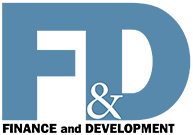Looming Ahead
Finance & Development, September 2014, Vol. 51, No. 3
Five Nobel Prize winners discuss what they each see as the biggest problem facing the global economy of the future
Global Warming
A Second Inconvenient Truth
![]() Fiscal policy and climate change
Fiscal policy and climate change
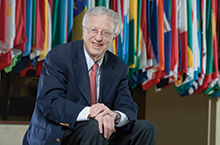
People think in terms of stories (or narratives). Tell the wrong story and you get yourself into trouble. American linguist-anthropologist-hobbyist Benjamin Lee Whorf documented this phenomenon in the 1920s. In his day job as a fire-prevention engineer he noticed a large number of fires occurred at gas stations. Putting his linguistics to work, Whorf discovered that the workers who handled the gasoline drums then used to transport gasoline chose to light up for a smoke around barrels they “knew” were “empty.”
A similar bit of linguistics is now getting the world into a great deal of trouble. Every few years the world’s leaders gather in grand conclave: Rio de Janeiro, Kyoto, Johannesburg, Copenhagen. Solemn pronouncements are made, but the can of global warming action is once again kicked down the road. The language of global warming doesn’t motivate individuals, on the one hand, and their governments, on the other, to take action today.
One simple story is both compelling and true. The Earth’s atmosphere acts like a protective blanket around us. This blanket allows the energy from the sun to penetrate, so the sun warms the Earth, and then the atmosphere benignly slows the rate at which that warmth radiates out.
Collectively we humans have a baby: the Earth. Year by year, inexorably, the atmosphere-blanket around our baby is getting heavier and heavier and heavier. Even a short road trip of 50 miles each way, using five gallons of gasoline, adds 100 pounds of carbon dioxide to the atmosphere. Through such innocent activities, the average U.S. family, for example, thus adds 1,800 pounds a week to Earth’s blanket. Add up all the families around the world, and with a dollop of science on top of our intuitive understanding about babies and blankets, and it’s easy to see that the world is, in all likelihood, getting warmer and warmer and warmer.
Any parent would rush to rescue a baby in such circumstances. But the stories we tell ourselves about global warming are too cold and too cautious. We read the proclamations of the Intergovernmental Panel on Climate Change. We defer to the conclusions of “scientists.” The scientists have spoken, with all but unanimous voice and often with great passion and force, but the professional dispassion of science muffles the message. I remember sitting next to a famous astronomer at a dinner some 20 years ago. Not knowing what to say to an astronomer, I brought up climate change. “We do not yet have confirmation that there is global warming due to anthropogenic climate change,” he told me.
That statement was correct in science-speak, appropriately wrapped as it was in his degree of doubt. But for the purposes of public policy, given the high probability of man-made global warming, such caution is foolhardy. Parents don’t take a baby’s temperature to decide whether the room is too warm; likewise, for global warming we need a story that spurs us to do what is necessary.
We need such a rhetoric not just for ourselves but so our governments will have the legitimacy and the will they need to take action. The economics of global warming is as well understood as any economic problem could be. The best way to fight it (but not without considerable expense) is to place a uniform tax on carbon emissions; that tax should escalate until emissions fall to desirable levels. Optimal policy also calls for subsidization of research and development into ways to reduce emissions.
But global warming is a global problem and emissions come from everywhere, so taxes and subsidies must be global. Each country must view it as its duty to come running. We need to enter into a global alliance in which “we” are all in this globally together. We must tell ourselves that we all need to pull together. We must pull as hard as we can, whatever the others do. Why? Because the Earth is our beautiful baby.
There are thus two inconvenient truths. The first is global warming itself. The second is that we aren’t yet telling ourselves the stories that compel us to combat it. ■
George A. Akerlof won the Nobel Prize for economics in 2001. He is Guest Scholar in the IMF’s Research Department, Professor Emeritus of Economics at the University of California, Berkeley, and author, most recently, with Rachel Kranton of Identity Economics: How Our Identities Shape Our Work, Wages, and Well-Being.
Increasing Demand
The Unresolved Crisis
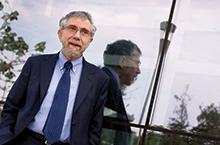
Midway into the second decade of the 21st century, the biggest problem facing the world economy—or at least its relatively rich countries—is a problem many economists never thought we’d see. For the first time since the 1930s, the world appears to be suffering from a persistent lack of adequate demand; people just aren’t spending enough to make use of the productive capacity we have. This was supposed to be a solved problem, one that may have bedeviled our grandfathers but wasn’t going to come back. But it did, and answers remain elusive.
Let me offer some crude summary numbers. If we take the IMF’s “advanced economies” aggregate from its World Economic Outlook (WEO) database, we find that the combined real GDP of these economies grew 18 percent between 2000 and 2007. Projections made at the time called for a continuation of growth at similar rates over the medium term. In fact, however, it now appears that the advanced economies will have grown only about 6 percent between 2007 and 2014, implying a 10 percent shortfall relative to what we used to think was the trend.
True, it’s widely argued that the actual amount of economic slack is much less than this; the WEO database estimate of the current output gap for the advanced economy aggregate is only 2.2 percent. But it would be very wrong to take a low estimate of the output gap as a sign that policy isn’t failing that badly, after all, for two reasons.
First, we don’t really know how far below capacity we are operating. Are the large declines in U.S. labor force participation or British productivity secular—that is, long term—or cyclical, the result of workers dropping out because they don’t see job opportunities? Is the stability of inflation at a low level evidence that the economy is operating close to capacity or caused by the unwillingness of workers to accept wage cuts, which makes the Phillips curve—the historically inverse relationship between rates of unemployment and corresponding rates of inflation—flat at low inflation? Nobody knows—and it would be tragic to accept low output and high unemployment as inevitable when they might be simply reflections of insufficient demand.
Second, to the extent that growth of productive potential has in fact dropped as much as estimates suggest, this is evidence of powerful long-run effects of supposedly short-run economic troubles: allowing a deep global recession to take hold seems to have led, over time, to a huge deterioration in longer-term economic prospects. This in turn implies that sustaining adequate demand is hugely important, not just for the short run, but for the long run too.
Either way, then, increasing demand should be an urgent priority. Unfortunately, what we have learned since 2007 is that our economic policymaking institutions are not at all well suited to coping with large, sustained demand shortfalls.
During the Great Moderation—as American economists James Stock and Mark Watson called the reduction in U.S. macreoeconomic volatility during the mid-1980s—we thought we had macroeconomic policymaking under control. Demand management was assigned to technocrats at independent central banks while fiscal policy focused on long-run issues. In the face of large, sustained shocks, however, it turns out that this system breaks down. On one side, central banks are constrained both by the zero lower bound—the fact that interest rates can’t go negative—and by concerns over the size of their balance sheets. On the other, fiscal policy, far from helping, quickly began making things worse. It has been hobbled both by asymmetry between debtors and creditors—the former forced to cut, while the latter have no obligation to expand—and by political infighting. I sometimes joke that Europe and the United States are in a competition over who can respond worse to the ongoing crisis; Europe is currently winning, but not by much.
It would be nice to believe that these problems are transitory, and maybe they are. But the stability of the Great Moderation was, we now realize, predicated on both ever-growing household debt and by relatively rapid growth in the working-age population, neither of which are coming back, and there are few signs of a policy turnaround.
So inadequate demand is still a very big problem, and looks likely to remain so for a long time to come. We need to find a way to deal with this situation. ■
Paul Krugman won the Nobel Prize in 2008. He is professor of Economics and International Affairs at Princeton University, a New York Times columnist, and author, most recently, of End This Depression Now!
Secular Stagnation
Affluent Economies Stuck in Neutral
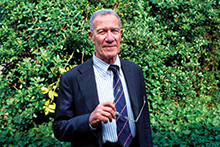
There is no chance that the world will run out of pressing economic problems in the next 50 years. Anyone’s short list would likely include dealing with the causes and consequences of climate change, responding—or failing to respond—to increasing inequality of income and wealth within national economies and, for the affluent economies, altering or adjusting to the apparent tendency for the conjunction of technology and demand to create jobs at the upper and lower ends of the skill/wage spectrum but not nearly enough in the middle.
However I want to propose an apparently less cosmic question, and it is indeed a question: Are the affluent economies of Europe, Japan, and North America now caught in an episode of so-called secular stagnation that is likely to be more than transitory? My justification for choosing this issue is that, if the answer is yes, and if an exit from the trap is not found promptly, the likelihood of a successful response to the larger problems is very much diminished.
The term secular stagnation—which goes back to the writings of U.S. economist Alvin Hansen in the 1930s—refers to a persistent tendency for a national economy (or a group of them) not only to grow slowly but more particularly to find it difficult or impossible to use fully its productive potential. Back in the day, this would have been described as a shortage of investment opportunities yielding a rate of return acceptable to investors. Today’s more general shorthand would say that the real rate of interest compatible with full utilization is negative, and not consistently achievable.
What is the evidence that secular stagnation is now a threat? It comes in two parts. The first is the argument, most forcefully made by U.S. economist Robert Gordon, that both population and total factor productivity will grow more slowly in the future than in the halcyon past. The demographic projection is pretty secure. The persuasiveness of pessimism about total factor productivity growth—in the efficiency of capital and labor—rests mainly on the belief that the information technology wave just cannot increase output/welfare as the great technological waves of the past—internal combustion, electrification, urbanization—did in their time. The secular stagnation argument holds even if this slow-growth scenario has a substantial probability of coming to pass.
The second part of the argument follows from the first. Population growth (through capital “widening”) and technological progress (through the need for novel capacity) are the main forces that have kept the return on private investment from falling, despite increasing capital intensity and diminishing returns. In a slow-growth future, saving will continue, the rate of return will fall, and private investment will weaken.
Moreover, it is argued, recent history confirms this pessimism. Only bubbles—dot-coms, housing—have been able to generate prosperity in recent years, and we know that can’t last. Here we are, five years after the official end of the last recession, and neither the United States nor Europe—least of all Japan—has been able to restore anything like full utilization. This prolonged weakness is at least consistent with the idea of secular stagnation.
But not entirely. Much of the weakness in private demand can be traced directly to a shortfall in spending on construction, both residential and nonresidential. (This could account also for the disappearance of many well-paying jobs.) There is no mystery about the cause. Those economies that experienced housing bubbles in the precrisis years are left with an excess stock of houses and a disturbed mortgage market. Something similar occurred with office buildings and other business structures.
Nevertheless some mystery remains. In the United States, at least, business investment has recovered only partially from the recession, although corporate profits have been very strong. The result, as pointed out in an unpublished paper by Brookings Institution Senior Fellows Martin Baily and Barry Bosworth, is that business saving has exceeded business investment since 2009. The corporate sector, normally a net borrower, became a net lender to the rest of the economy. This does smell rather like a reaction to an expected fall in the rate of return on investment, as the stagnation hypothesis suggests.
The prudent conclusion—is prudence fashionable?—is that the stagnation hypothesis is not a sure thing, but neither is it a long shot. Hansen’s worries were washed away by World War II and the expansion of government that followed. We should start thinking about the proper policy response now. ■
Robert Solow won the Nobel Prize for economics in 1987 for his contributions to the theory of economic growth. He is an Emeritus Institute professor at the Massachusetts Institute of Technology.
Inclusiveness
Enabling and Adapting to Developing Economy Growth
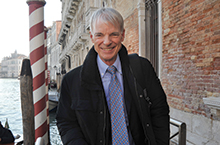
There are many pressing challenges in the global economy, but to me, the central defining challenge is accommodating the growth of developing economies and completing the convergence process that began after World War II. This holds the promise not just of massive poverty reduction but also of expanding the opportunity for healthy, productive, and creative lives among the 85 percent of the world’s population that experienced significant economic growth for the first time in the postwar period. This massive expansion of inclusiveness has the potential to be the defining characteristic of the century. But making it happen it is easier said than done.
Inclusiveness will require changes in mind-sets, policy responses, and institutions—international and domestic. The goal is to make the rise of the developing world as comprehensively beneficial as possible, even as major transitions compel shifts in relative prices, dramatic changes in economic structure in both advanced and developing economies, and changes in the distribution of income and wealth.
The convergence process, if successful, will triple the size of the global economy in the next 25 to 30 years—by a much larger multiple if our baseline is the start of the convergence process, 1950, instead of today. Attempting this journey without adjusting the world’s use of natural resources will result either in growth grinding slowly to a halt or, worse, in catastrophic failure after an environmental or ecological tipping point. Environmental sustainability is essential to accommodate the rise of the developing world.
All economies rest on a foundation of tangible and intangible assets. It is often possible to sustain growth for some time while underinvesting and allowing these assets to run down or at least remain flat, but this cannot continue indefinitely. We are learning that natural capital is an important subclass of assets that underpin the global economy. Underinvestment in natural capital will not only diminish the quality of growth but will eventually undermine it or even push it into negative territory. That is why the current work on measuring natural capital is one important step in moving toward globally sustainable growth patterns.
Second, there are distributional issues. In advanced economies, technological and global market forces are reducing or eliminating an expanding array of jobs via automation, elimination of the middleman, and offshoring in evolving global supply chains. Because this is happening so quickly, labor markets are off balance; human capital is poorly matched to the shifting demand side of the global economy. Accelerating a return toward equilibrium is a high priority for growth and fair distribution pretty much everywhere. And even if this were to occur faster than it is now, inequalities would remain.
At present, there is no consensus about how to deal with the various forms of inequality that exist. Some believe we should focus on poverty and let market outcomes decide the rest. Others worry about absolute losers—unemployed youth for example—and burden sharing, especially after large economic shocks of the type recently experienced. Still others focus on absolute versus relative gains and losses, and emphasize the absolute ones. Despite these differences, most societies, advanced and developing, share a desire for intergenerational upward mobility. Here the trends vary across countries and are worrisome in many.
If the labor-saving, skill-biased, and capital-saving digital technologies are as powerful as many of us believe, they will dramatically increase productivity. It is not obvious, at least not in high-income countries, that the resulting “surplus” should be deployed to produce and consume ever more goods and services. Perhaps it should be used to expand leisure. And maybe the workweek will—or should—become shorter on average. If so, we will need more comprehensive measures of welfare than the total value of goods and services acquired in recordable market transactions. This evolution won’t work if the employment model remains the same, with a majority working full time in the conventional sense and a growing minority unemployed.
Turning to stability and international coordination of economic policy, it would be unfair to characterize this as an area of failure. The General Agreement on Tariffs and Trade had a material role in opening the global economy, leveling the playing field, and enabling growth in developing economies. Governments and central banks do cooperate in crisis conditions, making crucial positive contributions. And international financial institutions have contributed much to poverty reduction and economic stability in emerging economies, and displayed flexibility with respect to policy in light of growing understanding of the behavior of the global economy and financial systems.
But governance reform in these institutions is lagging the changing relative size and influence of major emerging economies. That undermines credibility and authority and hence the ability to coordinate policy. Second, particularly in the area of finance and monetary policy, spillovers are largely neglected by major national policy-setting entities, whose mandates call for a domestic focus. Policymakers seem to be regulating the hubs in individual networks without regard for those decisions’ broader effects and feedback loops.
Effective supranational governance is at best a work in progress. One need only look at the European Union and the euro area to catch a glimpse of the challenges of bringing regulation and macroeconomic management in line with the rising networked interdependence of the global economy, or parts of it. The underlying issues are sovereignty, identity, and democratic self-determination.
Our children and grandchildren are set to live in a global economy that is much larger, more interconnected, and fairly distributed in terms of economic mass and power, and heterogeneous with respect to income levels, stages of development, and cultures. Learning how to make this journey sustainable, stable, and fair is the great economic challenge for all countries—whether their economies are advanced or developing—and their citizens. ■
Michael Spence won the Nobel Prize for economics in 2001. He is Professor of Economics at New York University’s Stern School of Business, Distinguished Visiting Fellow at the Council on Foreign Relations, Senior Fellow at Stanford University’s Hoover Institution, and Academic Board Chairman of the Fung Global Institute.
Inequality
The Economy Should Serve Society

The major battle of the post–World War II global economy was a fight over alternative economic systems: Did Communism or capitalism provide the best way of achieving growth and prosperity for all? With the fall of the Berlin Wall, that battle was over. But there is a new one emerging: What form of market economy works best.
For a long while, American democratic capitalism seemed to triumph. The United States pushed deregulation, privatization, and liberalization around the world, through a set of policies that came to be called the Washington Consensus. But then came the 2008 global financial crisis, when it was government that saved the market from its excesses. The attempt to minimize the role of the government had failed miserably, and led to the government taking unprecedented actions.
In the aftermath, many took a closer look at the U.S. economic system. With median income stagnant for more than a quarter-century, it became clear that this system was not delivering for most citizens, even if it was doing very well for those at the top. And even its political system came to be questioned: economic inequality translated into political inequality, evidenced so clearly by the ability of the banks that had brought on the crisis to resist the reforms that most economists saw as necessary to prevent a recurrence. Democracy is more than just regular elections for the choice of political leaders, and the outcomes of America’s democracy seemed increasingly more in accord with “one dollar, one vote” than “one person, one vote.”
French economist Thomas Piketty has argued that high levels of inequality represent the natural state of capitalism—it was only during a brief interlude after World War II as a result of the solidarity the war had brought on that things were different. Piketty confirms what others have noted: the huge increase in inequality both of income and wealth in the past third of a century and the increasing importance of inherited wealth. He forecasts that these trends will continue.
I believe that this high and increasing level of inequality is not the inevitable result of capitalism, nor is it the working out of inexorable economic forces. There are countries with much lower levels of inequality—with just as strong growth—whose citizens, especially those in the bottom half, fare far better than their counterparts in the United States. Some countries have even significantly reduced inequality in recent years, namely, Brazil. The high and growing inequality in the United States is a result of its policies and politics, and those that have emulated the United States—the United Kingdom, for example—are seeing similar results. The inequality is a result of the country’s ersatz capitalism—rampant with monopolies and oligopolies, government-conferred benefits on corporations and the rich, bailouts for the banks, deficiencies in corporate governance, and tax laws that allow the richest to move their money to offshore tax havens and pay far less than their fair share of taxes.
The IMF has rightly recently emphasized the adverse effects of this inequality on economic performance. In my book The Price of Inequality, I explained how we could simultaneously have more growth and stability and more equality—especially in those countries where inequality has reached the extremes that it has in the United States. Trickle-down economics doesn’t work—as the U.S. data amply show. And this is especially true when so much of the inequality arises from rent seeking (the top appropriating a larger and larger share of the nation’s pie for themselves) and from a lack of equality of opportunity, implying that those at the bottom never have a chance to live up to their potential.
The false capitalism that has emerged in the United States and some other countries is the predictable and predicted result of a flawed democracy that enables economic inequality to be easily translated into political inequality, in a vicious nexus where an increase in one form of inequality increases that of the other.
The major challenge facing the global economy in coming decades is more than just taming the excesses of the market economy—for instance, preventing the excessive risk taking, predatory lending, and market manipulation so strongly manifested by financial institutions in recent years. It entails making markets work as markets are supposed to work—with strong competition driving innovation that raises living standards, not the kind of innovation centered on how to appropriate a larger share of a nation’s income and circumvent the regulations designed to make the economy function well. It entails ensuring not only strong economic growth but also shared prosperity. It entails ensuring that the economy is the servant of society, not the other way around. When economic “advances”—whether associated with globalization or the creation of the euro—entail large cuts in wages or public benefits for broad swaths of society, we have to ask whether we have confused means with ends.
And the major challenge facing our global politics is ensuring that democratic processes truly represent the interests of ordinary citizens. Breaking the power of money in politics will not be easy. But if we don’t, we will face disappointments in our economies and our democracies. ■
Joseph E. Stiglitz won the Nobel Prize in economics in 2001 and is now University Professor at Columbia University and author, most recently—with Bruce C. Greenwald—of Creating a Learning Society: A New Approach to Growth, Development, and Social Progress.

